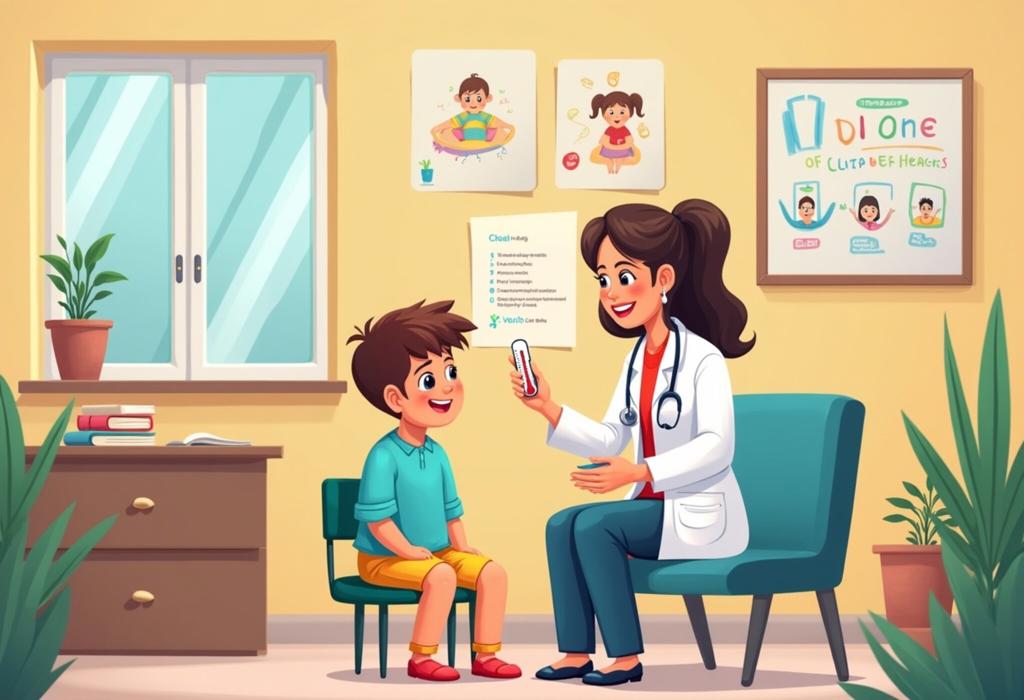For more details on this content, please review the step-by-step guide and frequently asked questions.
Pediatric Symptoms: Assessing Illness in Children

Step-by-Step Guide
Understanding Normal Developmental Milestones
Familiarize yourself with the typical developmental milestones for children of various ages. This includes physical, cognitive, and emotional development. Knowing what is normal for a child's age can help you identify any potential areas of concern or illness.
Recognizing Common Symptoms
Learn to recognize common symptoms in children, such as fever, cough, runny nose, vomiting, and diarrhea. Note how these symptoms can vary in severity and what accompanying signs could indicate a more serious condition.
Understanding the Context of Symptoms
Assess the context in which symptoms occur. This includes understanding the child's exposure to illnesses, travel history, recent vaccinations, and any known allergies. Contextual factors can significantly help in diagnosing the underlying issue.
Evaluating Symptoms Over Time
Monitor the duration and progression of symptoms. Some illnesses present with symptoms that evolve, such as worsening cough or persistent fever. Tracking these changes can aid in determining the urgency of medical care.
Assessing Accompanying Symptoms
Consider the presence of additional symptoms, such as weight loss, lethargy, rash, or changes in behavior. For children, multiple symptoms occurring together may indicate a more serious health condition that warrants immediate attention.
Taking Vital Signs
Learn how to take important vital signs such as temperature, pulse, respiration rate, and blood pressure if applicable. These measurements can provide crucial information regarding a child's health status.
Utilizing Parent's Observations
Engage with parents and caregivers, as they often provide valuable insight into their child's behavior changes. Ask open-ended questions about any concerns they have and any signs they’ve noticed.
Knowledge of Emergency Signs
Familiarize yourself with emergency warning signs that require immediate medical attention, such as difficulty breathing, blue lips or face, severe headache, or a rash accompanied by fever.
Implementing Pediatric Assessment Tools
Utilize pediatric assessment tools that may guide the evaluation process. This could include scales or charts used for specific symptoms, such as the Pediatric Early Warning Score (PEWS) for monitoring acutely ill children.
Creating Care Plans
Based on your assessment, work towards creating a care plan that addresses the child's needs. This could range from at-home care to requiring referrals to specialists, depending on the diagnosed concern.








